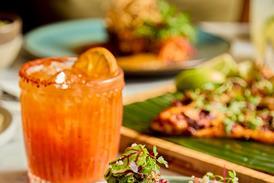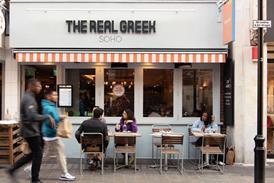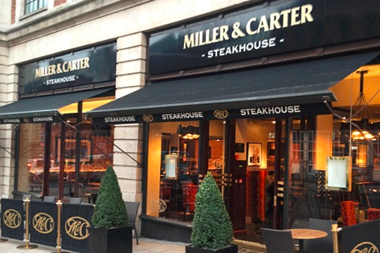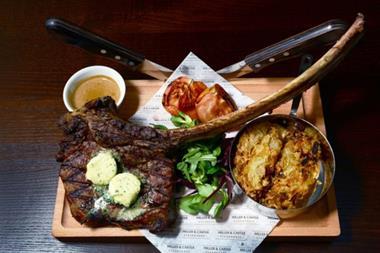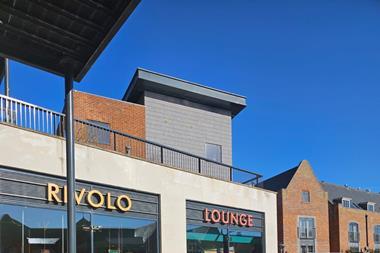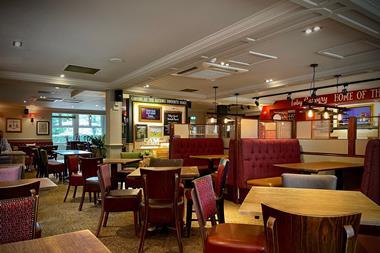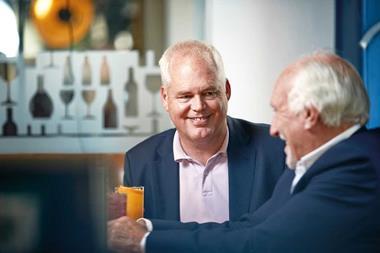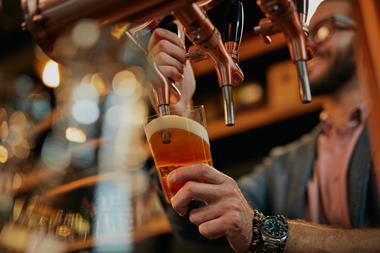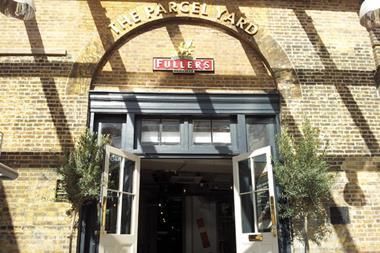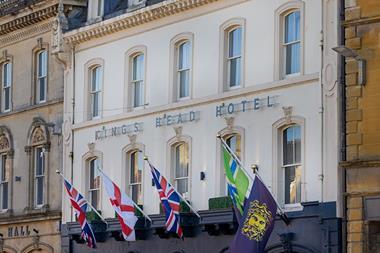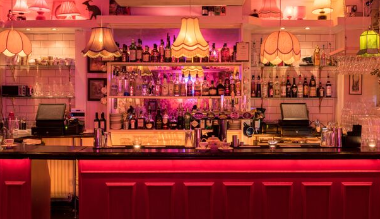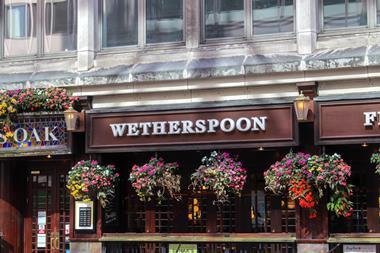As part of the launch of the CGA Stone & River Brand Momentum report, Mitchells & Butlers’ chief executive Phil Urban talks about how the multi-branded operator has remained at the top spot despite the volatility of the market.
Could you talk us through which brands in M&B’s portfolio you see as outperformers and the drivers behind their success?
Whilst outperformance for me is ultimately measured by like for like sales and profit growth, the softer measures such as customer perception and satisfaction are also really key. I always think that anyone can get profit out of a brand for one or two years, but it’s the quality of that profit that matters. I think that the current outperformers in our portfolio are Miller & Carter, Nicholson’s and Ember Inns because they have consistency and longevity performing year after year. We’re also delighted with the return on investment from Vintage Inns, and Premium Country Pubs and from our High Street and Suburban businesses. Having clear plans, a compelling proposition built on deep customer insight, and an engaged team, is critical to success.
What about the underperformers in your portfolio of businesses?
At the moment, we don’t have any real brand concerns. A couple of years ago both Harvester and Browns would have been seen as underperformers, but the teams have worked hard, and they are both now growing again. Our leasehold businesses are perhaps the biggest area of concern, where the current cost headwinds are exacerbated by rising rents. In some cases, even where we have stunning sales levels, we have huge rental costs, which means we are working hard for our landlords! When I look at other businesses which are more over-indexed towards leasehold sites, I am thankful that we are not in that position, as it is hugely problematic.
What do you think has led to Miller & Carter’s success?
I think that the brand has a very strong, compelling proposition, and it has the advantage of having almost a single-product-focus, which makes it easier to convey to the consumer what we are all about. I don’t think that this is essential to its success, but it certainly helps. Four years ago, M&C had stagnated at 30 businesses, but they were doing so well and I wondered why the brand wasn’t getting any bigger. We were sitting on so many mid-market sites that at the time were struggling, and it seemed obvious that some should convert to Miller & Carter. We helped M&C to grow quickly, by creating an internal pipeline of sites.
We still do the same things now with 110 sites as we did with 30, so what you get within the brand is a passion and a culture that is unique. As the brand has grown and as the consumer started to realise that there is more than one Miller & Carter, we have managed to avoid the perception that it’s just another big brand. I don’t think that we’ll hit the buffers, providing that we remain true to the brand ethos. It has a very broad appeal which is a great strength because it can work in many locations.
When a brand grows it can be difficult to maintain a strong culture of empowerment and ownership. Would you have any tips on how to maintain a strong culture within a growing brand?
Culture comes from the top, which is why it is so important for brand figureheads to be allowed to drive their respective cultures whilst respecting the Company Values. People often ask me if I think M&B has too many brands, but whilst there is no right or wrong answer, I always say that I think the optimum size for a brand is around 100-150, as then the figurehead can still know all the sites and all their people. I think this is very important, as brands are built on strong teams, where 1:1 relationships and shared values are key. At this size, there are still things that the leader has to ‘let go’ and can’t control anymore. No one person can do everything, so the leader needs to be able to trust their colleagues and accept that some things will change, as the brand gets bigger. Working out which things can be compromised, and which are sacrosanct, is the secret to success.
What is your process behind creating new brands?
M&B was declining 3 years ago, and many analyst reports called us a sleeping giant that was slow and not innovative. However, I thought that there was innovation going on everywhere I looked, it just wasn’t being showcased. One quick way to show what we were capable of was to create new concepts, so we came up with Chicken Society and Son of Steak. Son of Steak is trading very well, with positive customer feedback being off the scale, and it is going to open its second site soon. Chicken Society also gets incredibly strong feedback, although we see this more as an implant to existing businesses, rather than a standalone brand. We are currently working on another concept to meet the needs of our estate. However, the home-grown process can take a long time, before you become certain that you are onto a winner, so the other option is to look at existing offers in the market, where we can partner with an entrepreneur, and take a winning idea and scale it.
In terms of a brand not succeeding, what do you think the main headwinds are at the moment?
I think that labour cost is still the main headwind, with or without a hard Brexit. We need to keep growing the wage rates we pay, and I’d love to be able to accelerate that, but it does come down to affordability. We recognise that the demand for quality people is only going to become greater. Growing your own talent is key. We’ve put a lot into our apprenticeship schemes to get people on the career path within M&B. We now have so many examples of where people have come out of school, where perhaps academia wasn’t for them, joined us at a junior level, and have then climbed the ranks very quickly. The apprenticeship scheme has just formalised that process and is working well. The industry needs to be doing more here to change the perception of our sector, as we create so many jobs, and it should be seen as a very credible career pathway.
What’s your view on service? Do you think that brands have taken their eye off quality of service?
It’s one of the most important ways to differentiate. You’ve got frequency of visit dropping, the consumer has less to spend, and most brands offer similar incentives to visit, so in order to stand out, it has to come back to great People and great Service. So I am sure that the industry is very focused on service levels and that it has not taken its eye off the ball. However, there is a risk that when things get tougher, businesses rein everything in, when actually the essence of great service is giving people locally, the power and freedom to make decisions. The need to listen to customer feedback has never been greater in my view.
Looking at high street pubs and bars, do you think that it’s more difficult to differentiate there?
I don’t think so. O’Neill’s is doing well for us; it’s not a ‘hard’ brand but the sport, music, food & drink, and its Irish heritage means that it has a reason for being. It appeals to a very broad consumer group. You can’t trade in a run-down boozer anymore, you need quality, and having a loose branding device helps, but it is not essential. We also see success in our unbranded High Street businesses. If you do sport do it well; if you do music do it well; food and drink must be of a high quality and competitively priced; and by the way, get the lighting right! You have to have an offer which is able to morph through different day parts, and as always, you need a great team of people and a strong leader, running each business…. sounds easy!
Precis
Urban: ‘We do the same things with 110 sites as we did with 30’
As part of the launch of the CGA Stone & River Brand Momentum report, Mitchells & Butlers’ chief executive Phil Urban talks about how the multi-branded operator has remained at the top spot despite the volatility of the market.














